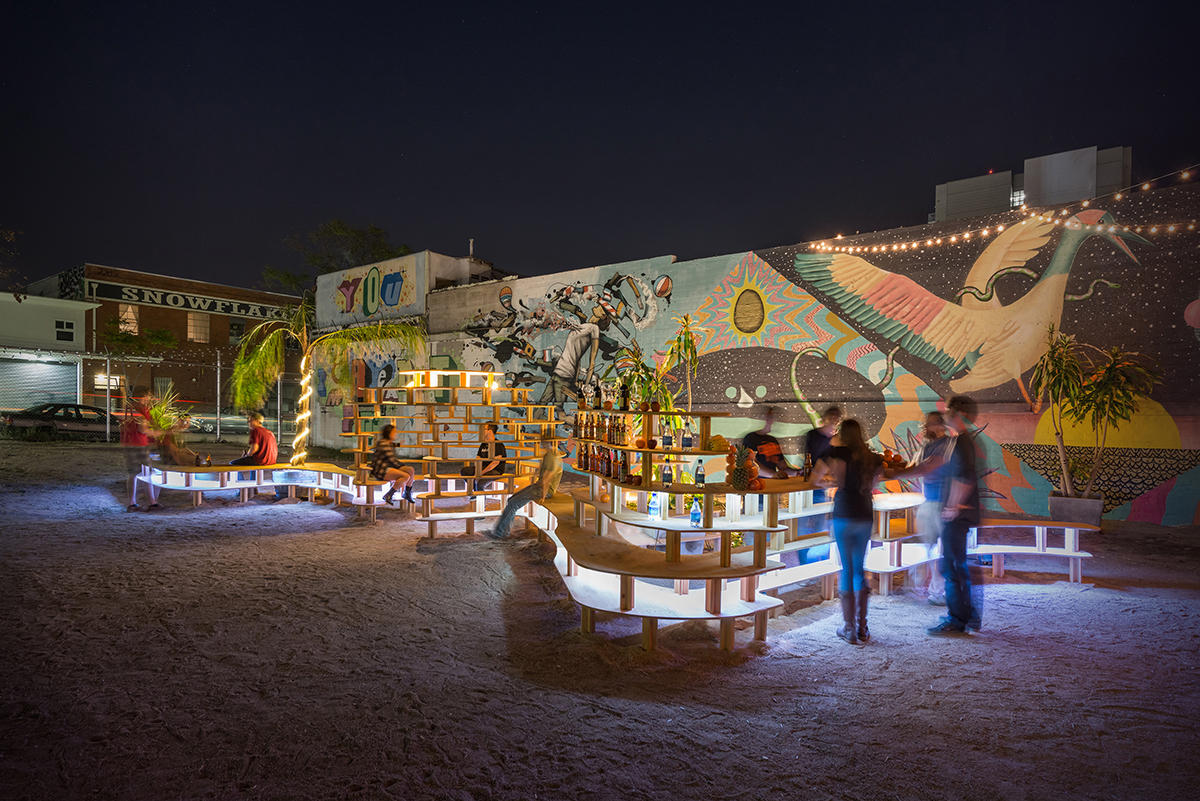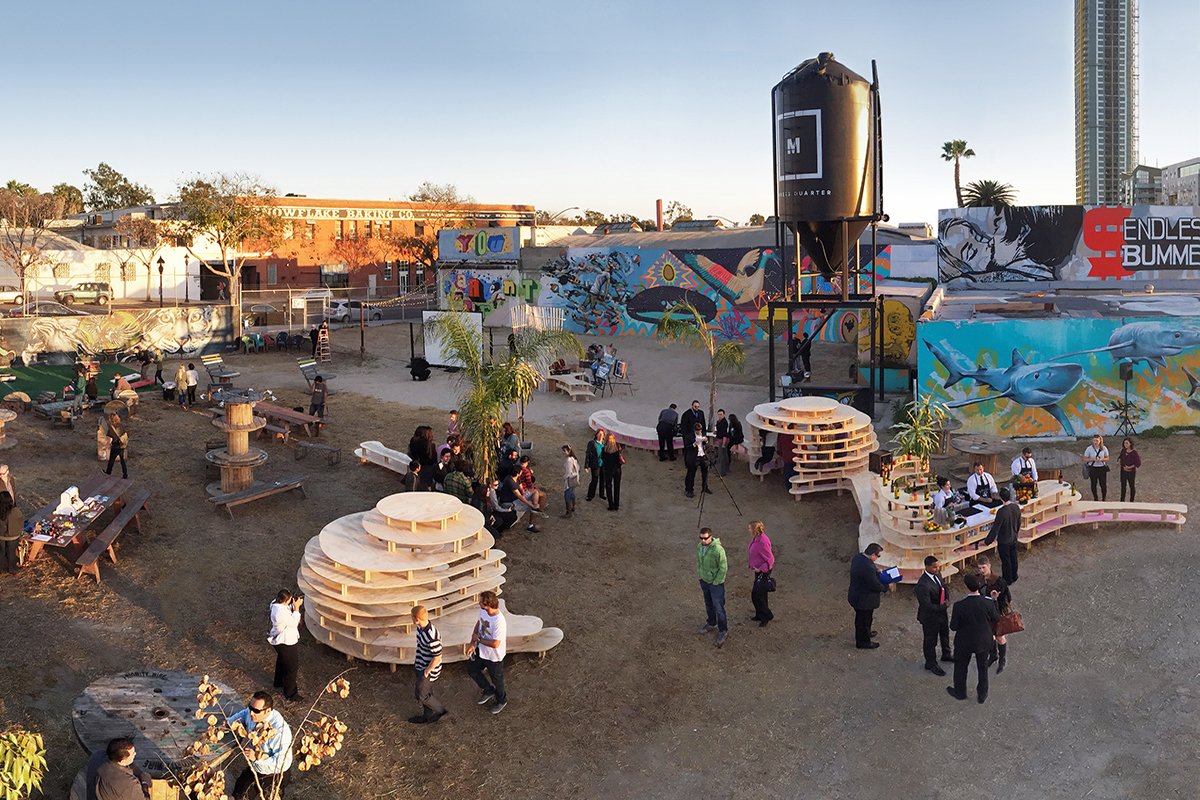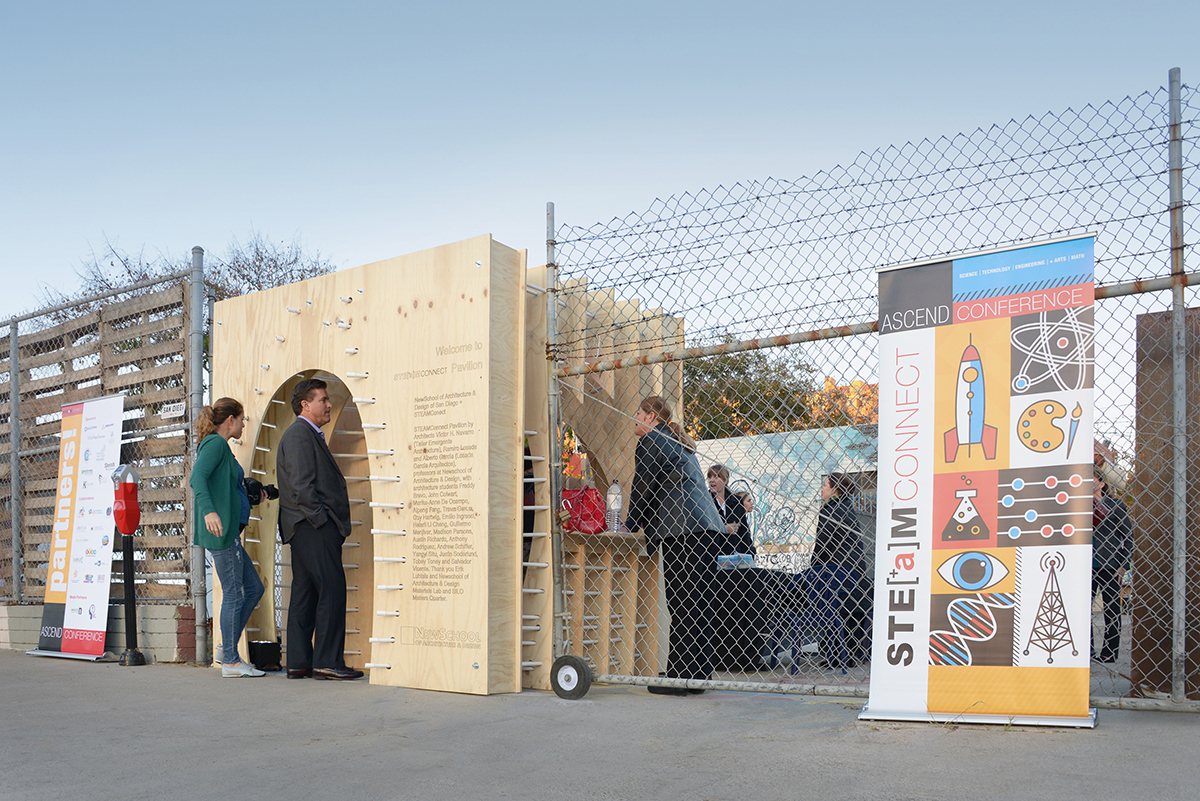STEAM PAVILION | San Diego, California
A+ Awards Special Mention from Architizer in 2016 - Ephemeral Architecture – Honor
Losada Garcia Architects (Ramiro Losada-Amor and Alberto García) y Taller Emergente Architecture (Victor Navarro) with Newschool of Architecture of San Diego students: Freddy Bravo, John Colwart, Marika-Anne De Ocampo, Aipeng Fang, Travis Garcia, Guy Hartwig, Emilio Ingrasci, Heiarii Li Cheng, Guillermo Menjivar, Madison Parsons, Anthony Rodriguez, Andrew Schiffer, Yangyi Situ, Justin Soderlund, Tobey Toney y Salvador Vicente.
STEAMConnect’s annual series of lectures, debates and workshops revolving around the links between science, technology, engineering, art, and mathematics is the context behind the construction of the pavilions designed by Ramiro Losada-Amor and Alberto García in collaboration with Víctor Navarro (Taller Emergente) and sixteen students of Newschool of Architecture & Design in San Diego (California). With a low budget and only a four weeks execution time, the facilities were conceived as spaces for informal gatherings and venues for artistic performances. The design was drawn up during the first week, the wooden pieces were cut by numerical control during the second, assembly took place during he third and the structure was transported to the site of the event during the forth.
Con motivo del ciclo anual de conferencias, debates y talleres que STEAMConnect organiza para explotar los vínculos entre la ciencia, la tecnología, a ingeniería, el arte y las matemáticas, se levantan los pabellones proyectados por Ramiro Losada-amor y Alberto García en colaboración con Víctor Navarro (Taller Emergente) y dieciséis alumnos de Newschool of Architecture & Design de San Diego (California). Contando con un presupuesto reducido y cuatro semanas para su ejecución, las instalaciones fueron concebidas como espacios de reunión informal y para coger actuaciones artísticas. Durante la primera semana se realizó e diseño; en la segunda se fabricaron las piezas de madera mediante corte de control numérico; en la tercera se llevó a cabo su ensamblaje; y en la cuarta se trasladó la estructura al lugar del evento.










